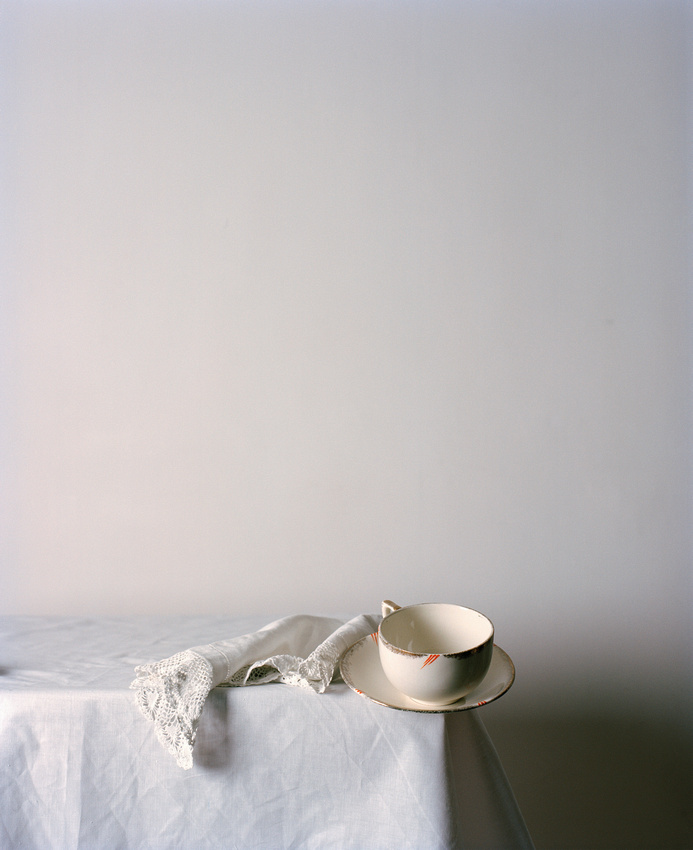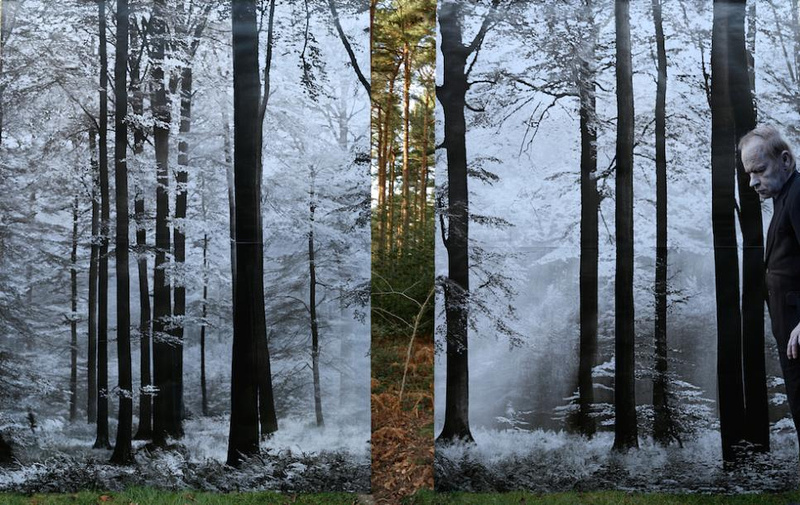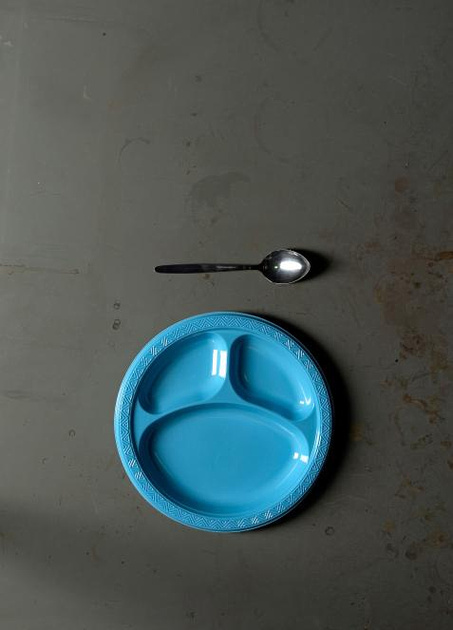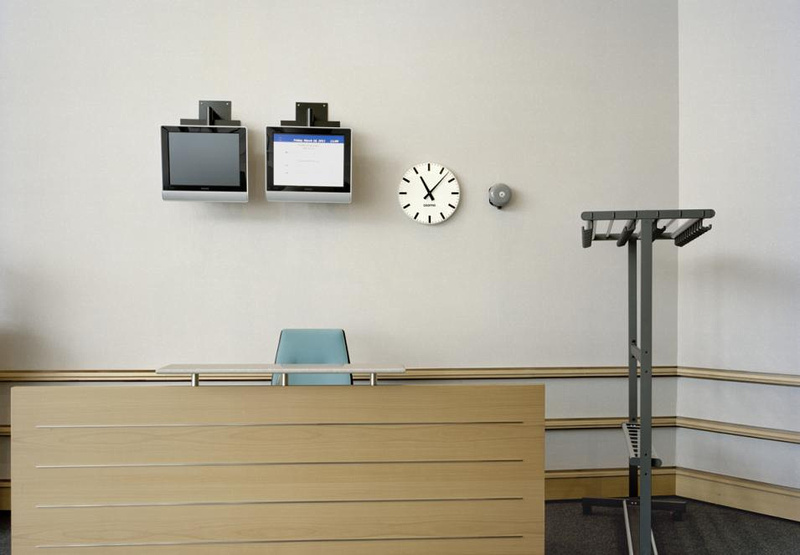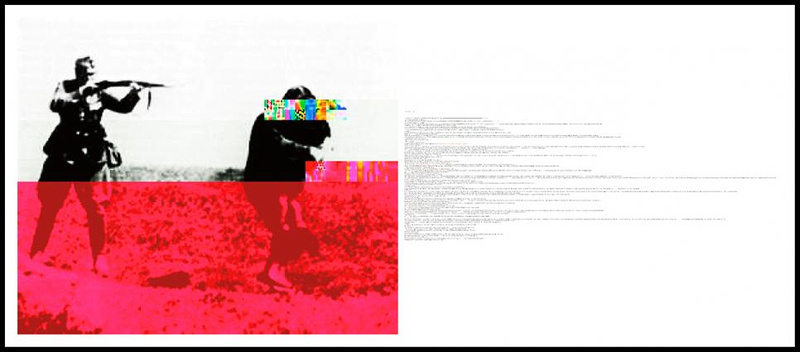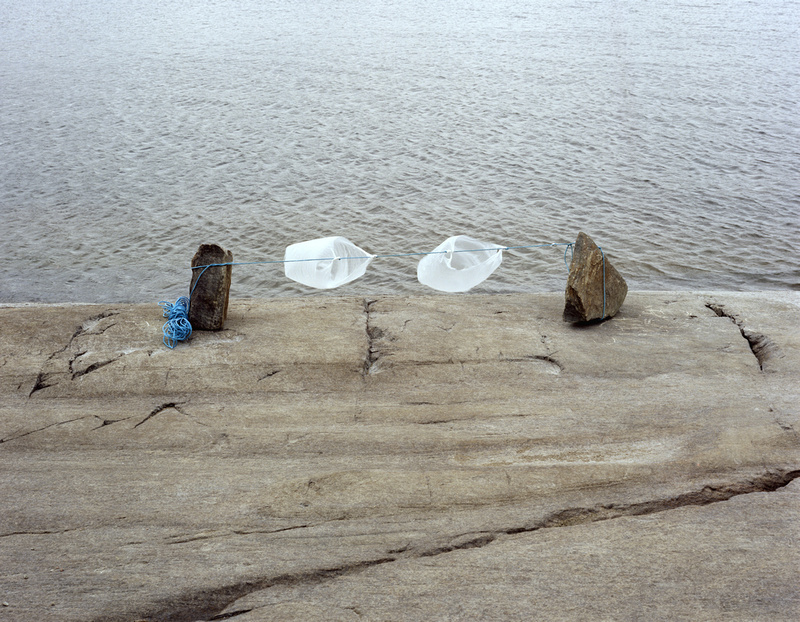The Photographers' Gallery Annual Graduates' Exhibition: A review in context.
The ContextTo visit the Fresh Faced + Wild Eyed exhibition at the newly refurbished Photographers' Gallery is to enter the cool white spaces of Britain's creative revolution. As anyone who watched the 2012 Olympics opening ceremony will be aware, in this post-industrial nation these kids are our future. Stella McCartney, for example, has rapidly gone from being someone else's daughter to representing serious GDP in her own right. And so I take a show like this very seriously: as a nation, this is what we do these days and even if these particular individuals don't end up being a significant export, they are part of the creative field fertilisation and crop rotation system that helps fill the nation's stomach. Given the quality of the schools involved, this show should be cutting edge. The schools are worth listing, because they represent the current 'top of the game' and include in their number institutions whose histories give a good clue as to where photography is 'at' in Britain at the moment.
So: out of nine schools represented, only one has deep Fine Art roots. One cannot of course clinically distinguish between applied art, fine art, design and craft (their Venn Diagrams overlap too much and too confusingly) but the trend above is clear: the great majority of the historic impetus of this group of schools was applied arts, rather than fine arts in orientation. From this I conclude that... We, as a nation, are not quite as 'over' the industrial revolution as it might seem. We realised during the days of steam and coal that every object made had first to be designed and these days, having thrown out the industrial bathwater we are at least left holding the baby. As a corollary of this, it's worth observing that those other nations which, in their first blush of industrial activity resort to 'borrowing' or buying design from abroad, won't do so forever: it is time to consolidate and protect our lead. This is not necessarily a Fine Art show - not that it claims to be, but that is very much the ambience, though the gallery's admirable remit is to 'show photography in all its forms'. But I would hazard a guess that of the students showing here, those who go on to get commercial representation will be mainly sold in future through the Fine Art galleries (such as Flowers) rather than through photography-specific galleries such as Diemar/Noble, which has recently (sadly) closed. Those who buy photography to hang on their walls regard it these days as a seamless extension of the fine arts and they want both the visual impact and the investment upside commensurate with that form of collecting. So to summarise the context: these are largely students coming from an educational infrastructure still firmly rooted in the industrial and productive application of the arts, but who will likely be selling into a Fine Art market. Which is not to say that photography in the UK is schizophrenic, merely that it is in transition, or maybe trying to juggle two balls. The ShowI'm going to treat this as a degree show, rightly or wrongly. In art school degree shows one used to expect to see a sort of 'finished body of work in progress': the work was finished, the artist in progress. Talent-spotting was conducted through a slight fog of immaturity, transitional expressions of style and the working out of creative tasks set by others. But at some point in the past ten years the gallery owners started to turn up with beadier eyes and readier cheque books and the degree show became a de facto first commercial show. Pressures which might constructively have been delayed were applied ever earlier. I cannot say that the work has suffered, but I do think that, like a pre-pubescent girl in lipstick and a short skirt, it has sometimes been brought on too soon for its own good. With the aforementioned gallerists hunting in packs and with the creative media always hungry to acquire fresh material the creative pubescence and teen-ages of the students are compressed together and the students are encouraged to produce very early. Indeed, at least two (that I can remember, possibly more) of these students have already appeared in the hallowed pages of the BJP. Luckily, pretty much everyone in this show is up to the task and the count of recycled tropes is low; at least as low as it is in the marketplace for mature work. I personally find that looking at a show, taking no notes, going away and then trying to remember the next day what I liked and what made an impression, is a good way of letting the content percolate. Here are some I enjoyed: Alison Bettles, whose subtly lit and well exposed scenes of domestic upset show vases, plates, teacups and glassware in various stages towards the ends of their precarious existence as delicate objects. They teeter, jostle, fall and break, victims of their ambiguous roles as items of creative design but practical purpose. To me, that serves as a fitting metaphor for the context of the entire show (see above) and that is the reason I list the work first. These are images of beauty as well as intent, and would hang well on a wall for a long time, continuing to give pleasure.
Alison Bettles, Teacup, 2011, Digital C-Type Print, © Alison Bettles, Courtesy The Photographers’ Gallery, London
Jonny Briggs. I am going to have to try very hard here to avoid the 'curatique' vocabulary of those for whom everything is an 'exploration', an 'interrogation', an 'examination' or a 'questioning'. They are all good enough words but please, enough already... Jonny Briggs has unearthed the photographic shoebox of memory, finding, framing, and sawing apart the images and then partially re-assembling them. Sometimes this is achieved physically, with an actual snapshot, in which the father's legs are repositioned under the child's body. Sometimes it is achieved in a dressing-up box recreation of scenes, like a children's home theatrical performance, stage set to be photographed. The work seems to be about the dislocations and reconstructions of memory, the attempt to understand what was 'really happening' and who was 'really' who and what their relationships actually were, all compounded by the haziness of memory itself. The use of faded photographs as a metaphor for this sort of thing is not in itself original but Jonny has gone deeper and wider, adding new and made-rather-than-found material and the results are intriguing, amusing, and a bit disturbing too. Having a photographic memory can be as much about time, decay and the imagination as it is about accurate recall.
Jonny Briggs, Un-seeing I, 2012, Lamda C-Type Print, © Jonny Briggs, Courtesy The Photographers’ Gallery, London
Helen Thompson has photographed the last meals of death row prisoners, turning them into beautiful visual still lives at the end of turbulent human ones. This was my favourite work of the show, and the image below will stay with me for a long time.
Helen Thompson, Angel Nieves Diaz's Last Meal, Digital Print, © Helen Thompson, Courtesy The Photographers’ Gallery, London
Paula Gortázar, whose images of the interiors of the European Parliament at Brussels and Strasbourg, largely devoid of people, remind me of those sci-fi movies about technical and inhuman futures where we are all fed soma or farmed for our organs. The effect is very creepy, very indicative of the faceless monolith that rules without explicit consent. It is also wonderfully well shot, with the eye of someone who has the talent to be a surrealist, an architectural or a documentary photographer, or all three.
Paula Gortázar, EU Parliament, Brussels, Jozsef Antall Building, Room Jan 6Q2, Lamda C-type Print, © Paula Gortázar, Courtesy The Photographers’ Gallery, London
David Birkin, who has had the original and intriguing idea of taking the name of someone associated with the subject of the image, inserting it as text into the digital image file and then printing the result as both 'corrupted' image and as text. In the case of the image below, it is the name of two people recorded in the Yad Vesham Holocuast database, inserted into an image by an unknown German military photographer. The cleverly named 'Embedded' ends up ticking both the aesthetic and intellectual boxes and is interesting to look at as it is to think about.
David Birkin, Untitled I, 'Embedded', 2011, Digital Pigment Print, © David Birkin, Courtesy The Photographers’ Gallery, London
Minna Pöllänen, whose creative documentation of the physical characteristics of a piece of her family's land is quietly lovely to look at and is very evocative of the great historical uncertainties involved in being Finnish (which she is) when your nearest neighbour has a history of bad manners when it comes to matters territorial.
Minna Pöllänen, Air, from the series Attempts, 2011, C-type print, 70 x 90 cm, © Minna Pöllänen, Courtesy The Photographers’ Gallery, London
There was nothing else in the show that was less than very good. I admired the occasional pictorialism of Maria Gruzdeva, and the sheer balls of Hallgerur Hallgrimsdottir in taking such a resolutely anti-romantic (though not anti-pictorial) approach to her native Iceland. I also enjoyed Gemma Marmalade's video of pigeons looking at lesbians with evaluative eyes (you have to see it to make any sense of that) but I do have one gripe: the catalogue. Whoever put it together has decided, from admirably egalitarian motives, to list the photographers in alphabetical order of Christian name. But the work itself, hung in three spaces over two floors, is presented in no such manner. Which means that as you make your progress, you are constantly required to flick backwards and forwards through the entire booklet searching for the rubric that attends each set of images. This is (sorry) a typically 'imaginative' triumph of concept over function and it detracts from the energy and attention that should be given to the work itself. One last word. Earlier this year, an art school of which I am trustee was looking for a local photographer to take some interior images of their studios for use in a brochure. Budgets were tight and quotes were high so I asked a photography student from another school to do the job. He was eager, and willing to do it for free. However, when we came to the brief I needed to cover some mildly technical matters such as depth of field, focal length and aperture and I was utterly and completely astonished to discover that the student, then at the end of his second term, had only the vaguest idea of what I was talking about and no idea practically as to how it could be achieved. 'I get really pissed off,' he said, ' because they don't teach us that. It's all about the creative stuff, which is great but I want to learn how to actually DO it. and I think the teachers don't really know enough to teach it properly.' The people who taught the fifteen students in this show clearly do know enough, and are able and willing to share their knowledge. Technical standards are very high without having in any way crowded out the achievement of creative expression. Those technical colleges know a thing or two about what they are doing.
Fresh Faced + Wild Eyed runs from 15-30 September 2012 at the Photographers' Gallery, 16-18 Ramillies Street, London W1F 7LW Thereafter the exhibition can be seen online at: www.ffwe.thephotographersgallery.org.uk
Keywords:
Art School,
Degree Show,
Fresh faced and WIld eyed,
Photographers' Gallery,
Review,
exhibition,
london,
show,
student
Comments
A really interesting article Tim, and one which rings true with me. It may be looked down on by Fine Arts types, but the best bang-for-the-buck I ever got was an evening course in photography at my local Art College. Theory, practical exercises and an exhibition at the end where we could express our creative side. Of course, the teacher is everything, and I was lucky enough to have a wonderfully inspirational educator who also really new her stuff.
It's a shame, but I get the impression this sort of access is on the decline.
No comments posted.
Loading...
|

